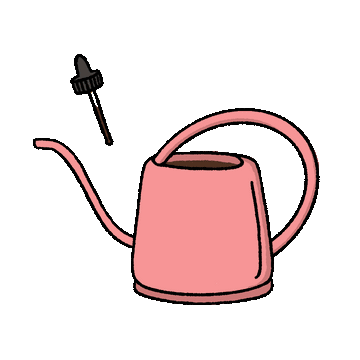Imagine you're wandering through a nursery and you come across a beautiful pot. Its the perfect size for that Phiodendron micans you have sitting on your bookshelf. Not only that, it perfectly ties in with your room aesthetic. There is not a pot more perfect in exisitence. You must have it.
Now close your eyes (although, perhaps read the next sentance first). Does it have drainage holes? If you answered yes: Great stuff. Just make sure it has a matching drip tray to go with it. If you answered no: Equally great stuff. There's going to be a little more work involved but you'll be just fine.
The point it - hole or no hole, you shouldn't be deterred from getting you hands on an incredible pot just because of its ability to drain.

What's in a hole anyway?
Drainage holes in pots serve one essential function - they allow excess water to 'drain' out, thus helping to prevent the potting media becoming soggy and causing root rot. Plants will only draw up as much water as they require, and any excess water will either remain in the potting mix or drain away. Most plants do not like having 'wet feet' - or sitting in soggy potting media. When the media is too wet, the roots cannot breathe and this causes them to die back, or rot. This can then spread to healthy roots, and eventually kill the whole plant.
You don't want root rot.
It is for this reason drainage holes are so frequently sought out for indoor plant pots. They also ensure you can give your plants a thorough water (we often advise 'watering until it drains out the bottom') that covers the entire root ball. Drainage holes do make things easier, allowing you to place the plant and pot in sinks, bathtubs and showers and give a good soak, then leaving them to drain off before returning them to their spot in the home.
It also means you can pot up directly into the pot (although we do have a better option below)
No Hole? No problem
Pots without drainage holes at the bottom are generally referred to as 'sleeves' as they are used to slide over the ugly plastic pots the plants come in when bought at the nursery. They are not designed to be potted into, as any excess water will simply pool at the base of the pot and it will be difficult for you to know how much is sitting down there. The chances of causing root rot when potting directly into a no-hole pot are high, so for this reason it is not recommeneded potting directly into these pots.
But why would you? Sleeves offer so many opportunites for change and variation. In fact, they even make watering easier. Finding a sleeve that fits perfectly over your new plant is not difficult. It gives you the option of easily sliding your plant out and placing in a new sleeve when the mood takes you, and even better it means you won;t have to lug that extra weight around when giving them a good rinse. You can lift the plant out of the pot, go give it a soak and place it back in its home once the excess water has drained out.
Choosing a pot thats right for you
In the end, pot choice is all yours. Depending on your personality and your plant collection, you might lean one way or the other. Below is our (very basic) guide to pot picking.
Are you...
All about aesthetics?
If aesthetics are the number one priority, then don't even worry about the hole v no hole thing. You can make it work either way and you'll have more options to find a pot that suits your home. Keep in mind though, whichever pot you choose its easier to mix things up if you don't pot your plants directly into their planter. Instead keeping them in the plastic pot and using the planter as a decorative sleeve will give you the opportunity to easily mix things up when the mood takes you.
A set-and-forget plant parent?
If you're not keen on taking your plants with you when you have a shower, or even bringing them to a sink fro a drink, then grab yourself a pot with drainage hole. Just make sure you have a drip tray underneath to catch any excess water coming out the bottom.
Keen to provide only the highest levels of hydration?
Go the sleeve. Or the holes. Eitherway, think about not potting directing into the planter and using the pots as sleeves. This means you can easily slide your plants out and take them to the shower/bath/sink/outside/bottom-watering-bowl when necessary, without the heavy lifting. This method not only ensures the root ball gets an even drink, but also creates the least amount of mess.

Plant Runner Hacks
DIY Hole creation
If a pot doesn't have a drainage hole but you are deadset on creating one, its possible. You will need:
- power drill
- rubber mat to prevent slipping
- diamond-tipped hole saw drill bit/ceramic drill bit
- water
- ceramic pot
- marker
- a mask to prevent dust particles being breathed in
Lay your cermaic pot on the rubber mat, upside down.
Next mark the centre of the pot where you want the hole.
Pour water over the base of the pot where you are planning on drilling - this is important as it lubricates the pot but also prevents dust particles being breathed in.
Gently begin to drill the hole - if using a hole saw bit start on a 45 degree angle to create an edge then lift up to a full 90 degrees. Use minimal pressure to prevent any cracking and you'll have a hole within minutes!
Tall Pot, Small Plant
If you have an unusually tall sleeve and a plant with the perfect diametre but no where near enough height, think about placing some pebbles in the bottom of the sleeve to boost the height of the plant. This also helps when watering if you don't have the time to remove the plant completely, you know the excess water will drain out of the plastic pot and through the pebbles, thus preventing the plant fromgetting 'wet feet'. This is also a great hack for increasing humidity around the plant.
If you take anything away from this weeks blog - don't let the hole/no hole thing stop you. If you have your heart set on a particular style or colour, you can mka




1 comment
Very well written and true. I’ve seen people review sleeves having put soil and a plant right into it, and others who drilled a hole in the bottom! Seems there’s still work to be done on educating the public. I think the French refer to sleeves as a cachepot and it’s not at all a new idea. But what’s really frustrating is when you find a pot you like and it has a hole in the bottom and no saucer! Talk about confusing things.
Leave a comment